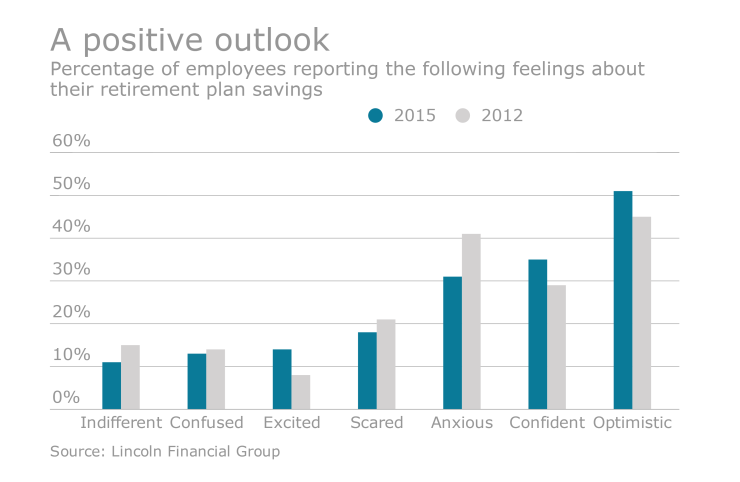Retirement plan sponsors have risen to the challenge this year when it comes to embracing their fiduciary duty.
“There’s been quite a bit of focus on retirement readiness, communications and getting plan participants to save more for retirement,” says Stacy Sandler, principal for Deloitte Consulting.
Deloitte Consulting’s latest Defined Contribution Benchmarking Survey “shows an overwhelming push to overcome obstacles, tap new methods, and simplify approaches in an effort to help participants tackle their future retirement income needs,” she says.
New technologies, analytics and enhanced communications are helping plan sponsors do a better job of reaching participants to overcome various savings hurdles.

Cheryl Ouellette, specialist master at Deloitte Consulting, says that what stood out for her in the survey was that 57% of plan sponsors were very confident they understood their fiduciary responsibilities under the new Department of Labor fiduciary rule, while 37% were somewhat confident. Only 4% said they were not confident and 2% said they were unsure.
Thirty-seven percent of respondents also said they were still in the process of reviewing the fiduciary rule’s impacts with their record keeper or investment adviser.
“Plan sponsors need to make sure they are looking out for the best interest of plan participants regardless of whether the fiduciary rule goes into place,” she says.
Sandler says that because the fiduciary rule has been in the news a lot, plan participants are now more likely to ask questions about it.
“Because of the activity we saw in the survey, plan sponsors are taking their responsibility to the next level and doing the right things for plan participants. Whether that is in relation specifically to the fiduciary rule or not, we believe the activity they are doing really is in the best interest of their participants,” Sandler adds.
Plan sponsors are also getting savvy about plan fees. In a benchmarking survey two years ago, half of respondents said that record keeping fees exclusively come from investment revenue. This year, that number dropped to 39%. Fifty-three percent of plan sponsors now say they are charged a direct fee from their record keeper.
“There was a flip-flop in how those fees are being paid. Plan sponsors are looking out for the plan participant,” says Ouellette.
In addition to fees, plan sponsors are making sure their service agreements are for shorter time periods, which forces them to reevaluate their service providers and the fees they are being charged more frequently, she says.
The survey found that 56% of provider service agreements are contracted for three years or less. It also found that 53% of plan sponsors have been with the same record keeper for 10 years or more, while only 20% have changed record keepers in the past five years.
Sandler says that plan sponsors are taking on more responsibility as a fiduciary by putting in more actionable changes, working from the “if you build it, they will come, from a plan participant perspective.”
Plan sponsors have also decreased the number of investment options in their plans by 13 percentage points since 2015. The average number of investments is now below 20, according to the survey.
Deloitte found that there is an increase in the number of new and innovative tools plan sponsors are offering to help employees save more for retirement, “but not as much uptake from a plan participant in terms of whether they are actually using it,” Sandler says.
For example, 79% of plan sponsors offer automatic fund rebalancing, but 39% of plan sponsors say that only 1 to 5% of participants use this functionality. Automatic fund rebalancing is a feature in which the employee elects a target allocation percentage among fund offerings, which ultimately triggers an automated fund transfer on a regular basis to achieve the target allocation, according to Deloitte.
Education is key
Sandler believes plan sponsors need to do a better job of educating their plan participants about these innovative tools, including through the use of social media.
“In 2015, 9% said they were starting to use it. In 2017, only 15% are using it, so it is increasing but sponsors are not using it to its fullest,” she says.
The number of plan sponsors offering a retirement readiness assessment increased to 35% this year, from 12% in 2013. They are also changing the way they present account information to participants. Instead of just showing their account balance, many plan sponsors are saying, you aren’t saving enough or getting enough return on your money to have a secure retirement.
Many give participants an exact monthly savings number they need to get to in order to achieve retirement readiness.





